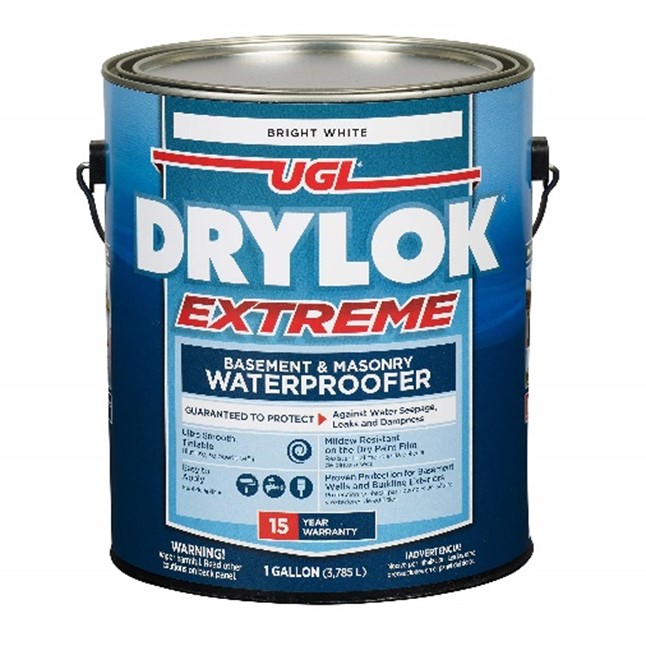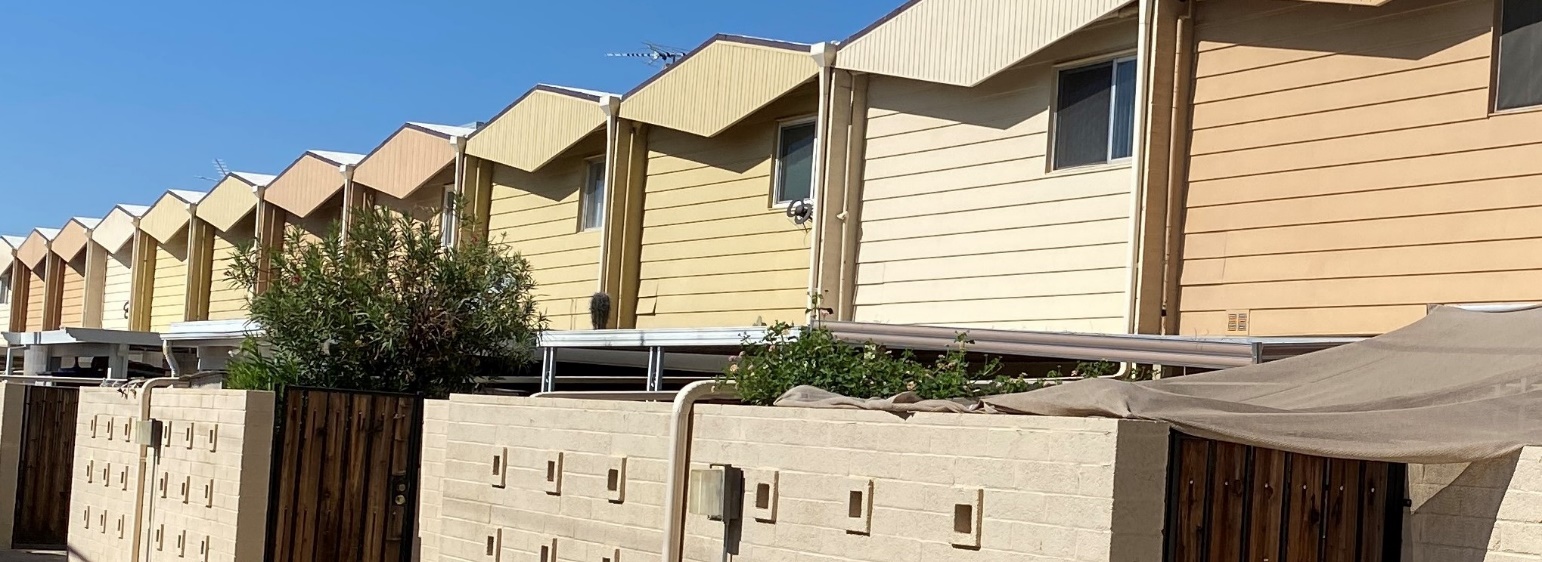October 2023 – by Randy Fornoff
For Property Managers, Solutions to Typical Stucco and Paint Failures of Common Walls
Keywords: stucco failure, stucco repair, stucco delamination, water damage, HOA, moisture intrusion, waterproofing, below-grade wall
Cost-effective solutions to the visible stucco and paint failures may be simple to come by, or they may be difficult. Failures may be as simple as color fading from time. Most of the best quality exterior paints offer an effective service life of seven to ten years, after which time they are expected to become chalky and faded. Repainting is the correct and straightforward fix.
On the other end of the scale, a cracked or crumbling wall could be caused by water intrusion, soil movement, or even mistakes made in the original construction of the wall. The right solution to fix this wall could be complicated and expensive.
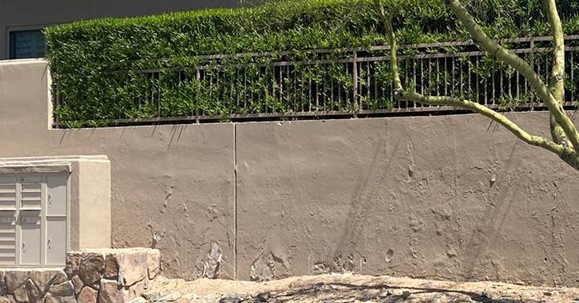
The issues and failure points observed are shown in the photos. Notice in the above photo the height difference of approximately five feet between the ground on the camera side of the wall and ground from the other side of the wall. Those shrubs are planted in soil that is just a few inches below the top of the wall. This is a retaining wall, which is a below grade wall. The wall retains the soil in the yard, keeping it from falling either by gravity or water into the adjacent space, which appears to be a mailbox kiosk walkway.
What is apparent in this picture is that the damage to the face of the wall increases lower down. I can see bubbling paint and delaminating stucco. I can also see evidence of previous wall repair, which is evidence of an ongoing issue, maybe for decades. The previous patches only temporarily improved the appearance of the wall. However, they did not resolve the underlying problem, which is moisture content in the soil on the backside of the wall that is penetrating through the cementitious substrates and attacking the stucco and the paint.
The best-case scenario is that the yard on the other side is being overwatered, therefore the soil is being unnecessarily saturated. The solution is to either adjust the irrigation timer to water less frequently, or look for a broken sprinkler head, or check to see if there is a leak in one of the valves. Once the soil dries sufficiently, repair and repaint the wall.
But what if it is more serious? More serious possibilities include:
- At the time of construction, the wall wasn’t properly waterproofed before it was backfilled. The wall can only be properly waterproofed from the soil side. To waterproof the wall now, the dirt would have to be removed, waterproof the wall, then replace the dirt.
- Perhaps the wall was waterproofed properly, but there has been some settling of the soil or movement in the earth that has cracked the wall in multiple places. These cracks provide opportunities for damaging water intrusion.
- Similarly, if the wall caps, the top layer of the wall, has become compromised, and water is able to penetrate to the inside of the wall through the top cap, water damage will occur.
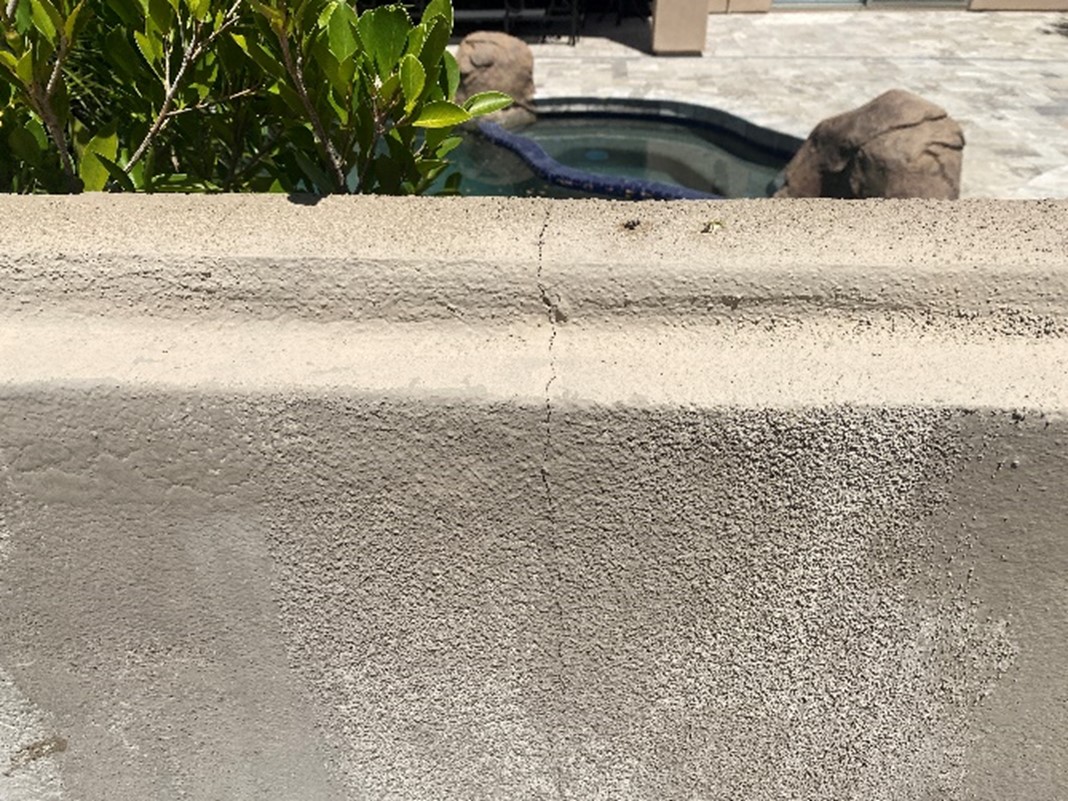
Let’s Get Technical
Masonry and concrete products are naturally porous. They allow the transmission of water and other fluids. Water is a marvelous substance when it stays where it is supposed to be. Think of a river flowing within its banks. But if too much rain or snow melt forces the water to overflow its banks, disaster happens. Now consider the perimeter and common walls at your property. If the masonry contractor used proper building techniques, and if the landscaping contractor did a proper job, and homeowners maintain their side properly, and if the manager maintains the wall by using a wise painter to repair and repaint as needed, the walls will hold up for decades.
Paint and stucco cannot hold back the hydrostatic pressure coming through the walls. The drying action of the heat and sun cause an increase of moisture transmission through any substrate. If the paint or coating, including stucco, cannot allow the liquid water or vapor to migrate through fast enough, the adhesion then fails. Peeling, bubbles, and delamination are the result.

Possible Solutions
- Have homeowners properly check for overwatering and reduce watering of existing plants to a bare minimum and modify watering duration properly every season change.
- Check for irrigation system leaks.
- Dig out landscaping and waterproof walls. This is the only warrantable solution, but usually is unfeasible.
- Add weep holes.
- Waterproof from the outside of the walls using a product like UGL DRYLOK, which is a cementitious coating originally used for basement wall waterproofing.
- Waterproof horizontal tops of walls
The Problems with the Solutions
- Excavating the backside of the wall, waterproofing, and replacing the soil is an expensive project, it is labor intensive, and any landscaping will be destroyed.
- We are not experts for the sizing and locating of weep holes. Even after drilling weep holes, water could pool higher or lower than the hole. Also, as they drain, the water can cause unsightly stains on the wall under the hole.
- Products like UGL DRYLOK can ONLY be applied to BARE cementitious substrates. It will NOT adhere and waterproof properly over painted surfaces. Also, if the backside moisture continues, it can “go around” the waterproofed areas and come through adjacent areas. DRYLOK application is expensive, and we won’t know how much to plan on waterproofing until preparation of delaminating areas is completed. We can guess, but I’ll typically guess high so that I’m covered. Mitigating risk lowers costs for contractors.
- When waterproofing the top of walls, we have to be careful with the application of the coating so that it does not run down the inside of the wall on the homeowner’s side or overspray into his yard, which would cause an issue with the homeowner. This need for carefulness makes brush and rolling the surface the preferred option. Brush and rolling is a slower process, and thus more expensive than spraying.
Recommendations
- Have an experienced contractor (stucco or painting) prep the obvious failing areas so stucco repairs and DRYLOK waterproofing can be estimated fairly.
- Waterproof the tops of all walls. Then inform and encourage homeowners to waterproof their back yard wall caps whenever they paint them too.
- Install weep hole at major and minor failure sites.
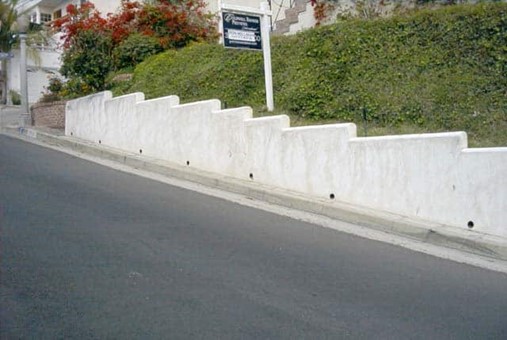
What Services MTS Painting Offers
- MTS does NOT offer soil-side waterproofing.
- MTS does offer portable pressure washing, scraping and wire brushing of bubbling, peeling and delaminating stucco.
- MTS does offer UGL DRYLOK or equivalent application. The process would be to remove all loose coatings and stucco, seal cracks and apply DRYLOK. The waterproofing process is followed by stucco patching, retexturing, and then priming and painting.
- MTS does offer drilling small weep holes of one inch diameter and smaller.
- MTS does offer waterproofing wall caps.
I hope these details help and are not too confusing. I would be glad to meet to clarify the terminology and processes and answer any questions or incorporate any other solutions.

